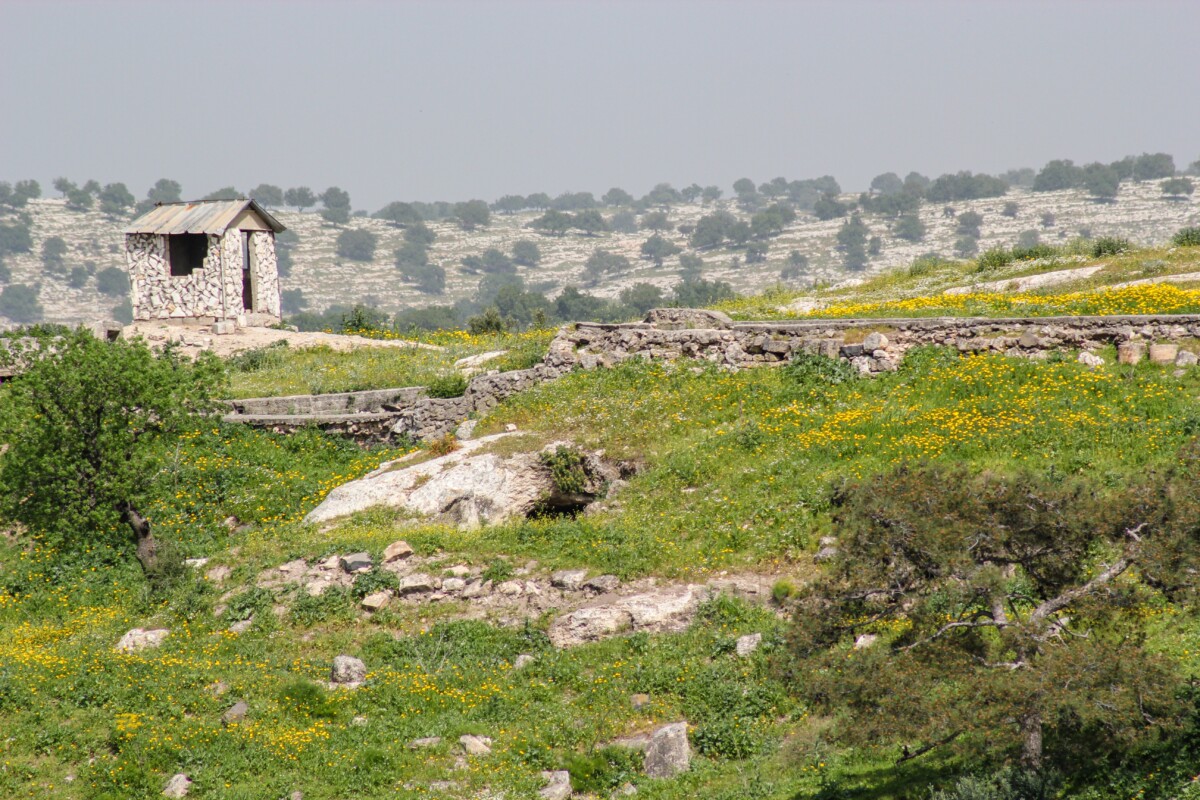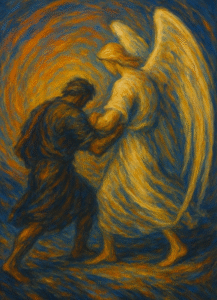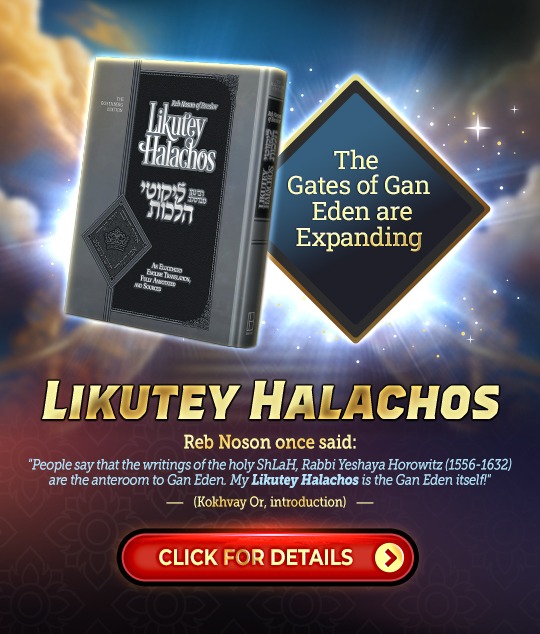- Israel ⬦ Joy ⬦ Read ⬦ Shabbat ⬦ Weekly Torah Portion
The Redemption of the Jubilee
The Four Scenarios of Property Loss
Parshat Behar opens with detailed halachot regarding land sales in Eretz Yisrael—laws rooted in the era of the Beit HaMikdash and the Sanhedrin, but rich with spiritual insight even today. The Torah outlines four distinct cases in which Jews, under financial pressure, sell ancestral land:
- Partial Sale of Inherited Land:
A Jew sells part of his family inheritance—his ancestral field. While the land is technically sold, it’s only until the Yovel (Jubilee), the 50th year, when it automatically returns. However, the Torah requires a two-year waiting period before the original owner can redeem it, even if he regains the financial means earlier. - House in an Open Field (Unwalled Village):
Someone who builds a house in a non-walled village (not one from the time of Yehoshua bin Nun) and sells it may redeem it immediately upon financial recovery. The house is still tied to the field and returns to the original owner at the Yovel, but the seller doesn’t have to wait two years to buy it back. - House in a Walled City from the Time of Yehoshua:
This case is more stringent. If a house in an ancient walled city is sold, the original owner has exactly one year to redeem it. If he misses that window, the sale becomes permanent—litzmitut—and even the Yovel won’t return it. Depending on circumstances, the house may go to the buyer or become hekdesh (Temple property). - The Levi’im and Their Cities:
The Levi’im were granted 48 cities across Israel. A Levi who sells property—whether a house or a field—may redeem it anytime. The Torah grants them this leniency regardless of location, because their property is inherently linked to their sacred role.
Jubilee and the Joy That Leads to Keter
The concept of Jubilee, or Yovel, introduces more than just a legal mechanism—it points to a spiritual ideal. Every 50 years, land reverts to its original owners, servants are set free, and the entire structure of ownership and control is released. But more deeply, the number 50 alludes to the 50th Gate—the Keter, the crown, the most hidden and transcendent level of holiness. This gate stands just beyond reach, separating the human realm from the Infinite Light of Hashem.
Although Keter is traditionally the 10th of the Sefirot system, it also corresponds to 50 when viewed through the lens of 5 pathways to joy, each multiplied across the 10 stages of spiritual development. This structure—5 x 10 = 50—reveals the link between simchah (joy) and access to the Keter. It’s not academic; it’s deeply practical.
Reb Noson, Rebbe Nachman’s foremost disciple, draws from the verse “Vesimchat olam al rosham”—the eternal joy will rest upon their heads. He teaches that the joy a Jew works to generate in the midst of the struggles of olam hazeh, the confusion of this world, leads him to the Keter—al rosham, the crown placed upon the head. This joy is not passive; it is earned through effort and resilience.
Rebbe Nachman identifies five concrete practices that build this joy:
- Acting silly: Using holy foolishness to escape sadness and awaken laughter.
- Dancing and music: Physical movement with niggunim uplifts the soul.
- Finding the good points (nekudot tovot): Recognizing the smallest sparks of good within oneself.
- Giving thanks: Cultivating gratitude for the known and the hidden kindnesses.
- Looking to the future: Trusting that everything will ultimately be redeemed and fixed.
These are not just emotional strategies—they are spiritual tools that escort a person toward the 50th Gate, the gate of return. Through them, one can touch Yovel, the crown year, a time when all is restored and all debts are released.
But what triggers the need for such restoration?
Even when we fall, the Keter—when accessed through simcha and through time—pulls us back in. Whether you redeem your land early through your joy, or wait for the Yovel, the house in the field can return, and your connection to Hashem can be restored.
When Sadness Leads to Sale
The Torah describes the person who is forced to sell his inheritance. He does so out of desperation, but spiritually, he may be forfeiting something far more profound than land. Rebbe Nachman teaches that poverty often begins with sadness. When a person feels broken and dejected, that very state attracts constriction and loss. The lack of joy becomes the vessel for dinim—harsh judgments—to descend.
And so the man sells.
He parts with ancestral land that connects him to his lineage and spiritual roots. In that moment, he feels he has no choice. But on a deeper level, something preceded that external crisis: an internal disconnection from joy.
This is why the Torah ties every form of sale—every crisis of ownership—to the concept of Yovel. Jubilee is the reset. It is not merely a social policy; it is a Divine invitation to reclaim what was lost through the power of simchah. When the year of Yovel comes, the man who fell must see in it a message: “You can return. You can receive back what you lost. But not through despair. Only through simchah.”
The Field as a Spiritual Inheritance
Returning to the first of the four cases—the man who sells his field—the Torah grants him the right to redeem it at the Jubilee. Why? Because, as we’ve seen, Yovel is the Keter, and the Keter is accessed through joy. Even though the man sold his land, the Torah ensures this sale is never permanent. There’s always hope for return.
But there’s a catch: the Torah says he must wait two full years before he can redeem the field. Why two?
Rebbe Nachman’s teachings shed light here. The field, or sadeh, is far more than real estate. It’s a space of spiritual possibility. Breslov tradition often refers to the field as the place of prayer and personal connection with Hashem—a place away from the noise, distractions, and obsession with money that plague the modern world. The sadeh is where the Jew goes to reconnect, to speak with Hashem, and to find clarity. If a person sells his field—if he gives up his access to that quiet communion—he’s not just giving up land. He’s relinquishing a spiritual inheritance.
So the Torah punishes him with delay: you must wait two years before you can get it back.
Why Two Years?
What does this number signify?
Rebbe Nachman explores the spiritual meaning of “two” in Lesson 19 of Likutey Moharan, through the mitzvah of shnaim mikra v’echad targum—reading the weekly Parshah twice in Hebrew and once in Aramaic. The repetition of Hebrew represents reinforcement, solidifying the sacred language and allowing its truths to root deeply. Aramaic, a mixed language—neither fully holy nor impure—represents the complex realm of human struggle. Reading the verse in Aramaic lifts the holy sparks trapped in confusion and blends them back into kedushah.
Thus, the two Hebrew readings anchor the Torah’s light, while the single Aramaic reading brings clarity to the murky.
So too with the man who sold his field. His error wasn’t just financial—it was a spiritual descent, a result of forgetting the joy and nourishment that the field offered through personal prayer. To reclaim it, he must rebuild that inner foundation, reinforcing it through repetition—two years of solidification—before returning to the field. This waiting period is not punishment for punishment’s sake. It’s a rectification.
The Deeper Meaning of the Waiting Period
So why is the man who sells his field penalized with a mandatory two-year delay before redemption? Rebbe Nachman reveals that speech—especially holy speech—is the root of spiritual vitality. The man who sells his field is not merely making a financial mistake; he has disconnected from his personal sanctuary—the sadeh, the field, the place of his conversations with Hashem. He blemished the power of the holy tongue, the very tool through which a Jew returns to God, as it says: “Take words with you and return to Hashem.”
This two-year delay symbolizes the double strength of the holy tongue—two recitations of each verse in shnaim mikra—which must be rebuilt. Had he preserved his relationship with Hashem through daily dialogue, he never would have reached the point of selling the field in the first place. So now that he’s awakened and wants to return, he must wait, repairing what was lost through two full years.
The House in the Field: A Higher Spiritual Level
Contrast this with the man who builds a house in the field and then sells it. This individual has already gone beyond potential—he has built something real out of his connection with Hashem. The field alone symbolizes potential: the possibility of prayer, the chance for detachment from the world. But a house in the field means actualization—a family, structure, and spiritual blessing born from the sadeh. He took the space of prayer and turned it into something enduring and tangible.
Because he has already manifested the fruits of his spiritual work, his teshuvah is quicker to be accepted. He does not need to wait two years. His field-based home, once sold, can be redeemed immediately upon his awakening.
The Levite and the Power of Joy
The Levite, too, shares this merit. No matter what he sells—field, house, or inheritance—he can redeem it immediately, just like the man with a house in a field. Why? Because the Levite’s life is filled with reminders of simcha.
Unlike ordinary Israelites, the Levites served in the Beit HaMikdash through music, playing instruments in the Holy Tempe that echoed the joy of the upper worlds. Their rotation through the Temple service, and their reliance on the tithes from the rest of the Jewish people, kept them spiritually focused. Their life was not about productivity in the conventional sense—it was about connection.
Rebbe Nachman says that when a Jew truly expresses himself before Hashem in personal prayer – i.e. hitbodedut, joy inevitably follows. That joy is spiritual, not superficial—“It was so good to get that off my heart.” The Levite lives in this joy. So if he stumbles and sells what should never have been sold, his return is quick. His simcha makes him receptive. He is not detached from the source of blessing; his teshuvah is rooted in joy.
The One Who Built on the Wrong Foundation
And then there’s the final case—the man who sells his house in a walled city from the time of Yehoshua bin Nun. At first glance, he may seem successful—urban property, solid construction, high value. But spiritually, the Torah tells a different story. These cities were built by the Gentiles before the conquest of the land. Spiritually speaking, they represent worldly pursuits—a life built around money, status, and physicality.
Yes, he may be religious. But the Torah sees through the illusion. His values are embedded in chutz l’sadeh—outside the field, beyond the zone of personal prayer and humility. His attachment to the walled city shows he’s constructed his life with external fortresses of wealth and ego. And so, he is given only one year—one short chance to reclaim what was lost.
That one year parallels the Aramaic, the Targum—a mixture of holy and unholy, a language that is neither fully divine nor fully secular. The one-year limit corresponds to this zone of spiritual ambiguity. If he merits, he redeems it. But if he misses that narrow window, it’s lost forever.
This person cannot rely on the Jubilee. His connection to the Keter is severed, or perhaps was never there. What he built was not grounded in a life of simcha, avodat Hashem, and humility, but in money-money-money. And now, the Jubilee won’t save him—not because Hashem is cruel, but because the walled city represents a spiritual cutoff. Redemption only reaches those who still maintain a thread to the field.
Jubilee: The Gate of Return
And yet—for the others, there is always hope. The man who sold his field, the one who sold his house in the field, the Levite—if they failed to redeem their property in time, the Jubilee restores it. Why? Because Jubilee is the Keter, the Fiftieth Gate, the crown. It doesn’t just punish—it heals. It lifts. It reopens doors we thought were closed forever.
This is the Torah’s message in this Parshah: Even when we fall, even when we sell off our spirituality for temporary survival or worldly entanglement, the Keter—when accessed through simcha and through time—pulls us back in. Whether you redeem your land early through your joy, or wait for the Yovel, the field can return. The house in the field can return. Your connection to Hashem can be restored.
The Holy Land and the Crown Above
This also explains why the land of Eretz Yisrael is so central. The Eretz, though physically low and dusty, is spiritually rooted in the highest realm—the Keter. Even the earth of the Holy Land is suffused with holiness. To walk four steps in the land, to breathe its air, is to become wise—avira d’Eretz Yisrael machkim. Because the light of the Keter descends here more directly than anywhere else on earth.
And so, the cycle of the Jubilee is not just agricultural. It’s a cosmic reset, a return to your origin. It reminds every Jew that no matter how lost, no matter how deeply sold off your holiness feels, Hashem owns the land. And He will return it to you—if not by your own efforts, then by His mercy.
May we be zocheh to see the full return: of the land, of the Beit HaMikdash, of the people, and of the light of the Keter to the entire world. May the Jubilee sound once more, restoring us to our source in joy.
Shabbat Shalom
Meir Elkabas
- 0 comment























